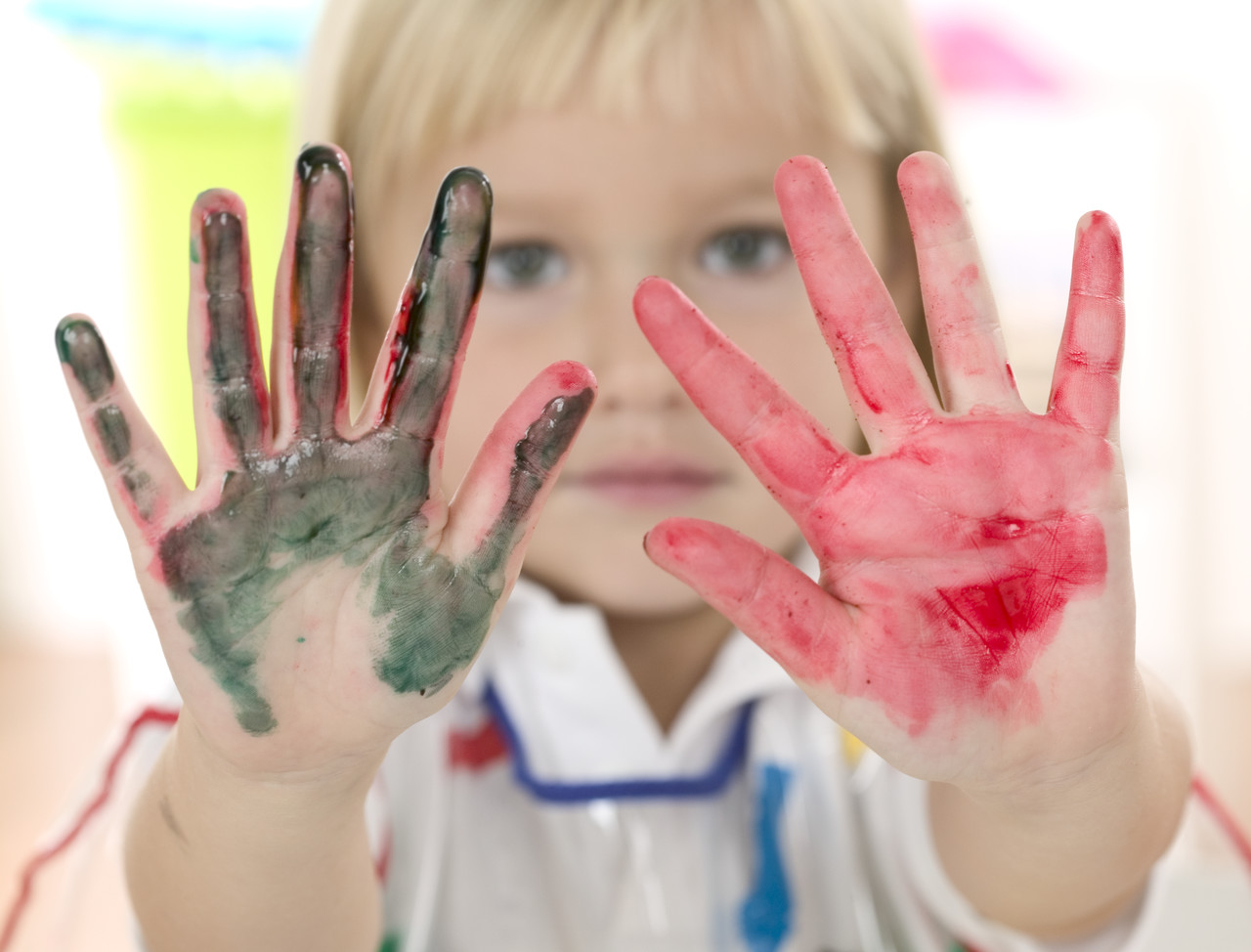Part of social-emotional growth is having a good self concept. Part of that positive image comes from taking care of yourself. While this is easy for some children, others tend to have little interest in brushing teeth and combing hair. While browsing the library shelves, I noticed a book about tooth care that was very different from what you ordinarily find. In this book, children learn facts about taking care of their teeth from various animals. For example, a shark reminds kids to take time brushing. On the same page we learn about how many teeth a shark has in a lifetime. Snail reminds children about healthy eating and I learned that snails have teeth, a lot of them. While not the book for every child, it just might appeal to those children who like animals, facts and informational books.
I also like that the book has local roots, at least for folks in central Pennsylvania. The author, Floyd Stokes and illustrator, Mikell Worley live in the area. Many of the children may have seen Mr. Stokes, sometimes known as SuperReader, preform at a local library or school.

Saturday, October 17, 2009
Wednesday, October 14, 2009
Who's Out There?
I see all the great ideas Kay is posting. I know you are reading and absorbing them. I hope we are helping you. Please add your own comments and ideas, so we can chat about them. If you have suggestions about what to include on this weblog or website, please let us know in a comment.
Thank you.
Thank you.
Sunday, October 11, 2009
Books for Adults and Children
Our classrooms are using a new behavioral assessment this year. The big difference I see between this one and others which I have used, is that it looks at the positive attributes more than the negative ones. We all know that resilient children can survive through challenging situations, but what makes one child able to do this and another not? The new program we are using asks teachers to look at these strengths in a child. One of these strengths is initiative. I couldn't help but think of this when I read the book, Bad Boys Get Henpecked by Margie Palatni and Henry Cole. Willy and Wally, the wolves, sure have plenty of initiative as they work to gain the trust of Mrs. Hen, all in the hopes of delicious chicken dinner. I'm not sure about the lesson for children in this book, but I do think adults could do well to think about the strengths of the wolves in the story. They are able to come up with a plan to get a dinner by becoming handymen and working in the hen house. They are also hard workers as they do laundry, mop, vacuum, and more. As a teacher or parent it is good to find a way to recognize positive attributes and put them to work for good. So I urge you to check out this funny book, but more importantly to look at the strengths of your most challenging children. Yes, they may be persistent or demanding, but that may be just the skill that keeps them working at figuring out a math problem or applying for jobs. They may be constantly on the go, but that may be the characteristic which allows them to work a full time job and go to college as an adult. Take time to see how to appreciate and direct the those challenging behaviors!
Another book that would be just as good to read with adults as the children is Hurry Up and Slow Down by Layn Marlow Tortoise likes to take his time through the day and Hare is always telling him to, "Hurry up!" That is until bedtime when the Hare is ready to slow down and listen to the bedtime story, but Tortoise just wants to get through the story. Children can learn to appreciate others who move at different speeds, but it is the adults who often need to step back and see how they rush children through the day and don't always take time to enjoy being with the children. So I remind you, just as Hare reminds Tortoise, "Hurry up and slow down! We need to take our time Tortoise. We need to look at the pictures!"
Another book that would be just as good to read with adults as the children is Hurry Up and Slow Down by Layn Marlow Tortoise likes to take his time through the day and Hare is always telling him to, "Hurry up!" That is until bedtime when the Hare is ready to slow down and listen to the bedtime story, but Tortoise just wants to get through the story. Children can learn to appreciate others who move at different speeds, but it is the adults who often need to step back and see how they rush children through the day and don't always take time to enjoy being with the children. So I remind you, just as Hare reminds Tortoise, "Hurry up and slow down! We need to take our time Tortoise. We need to look at the pictures!"
Saturday, October 3, 2009
Finding Friends
Wouldn't it be wonderful, if it was easy for every child to make friends? Some children are so good at finding friends, they don't understand how it feels to want a friend. One Brown Bunny by Marion Dane Bauer and illustrated by Ivan Bates is a good way to start a conversation and build an awareness about how it feels to want a friend and how to approach others with whom you would like to be friends. This short counting book is about one bunny going from place to place asking others to come and play. Before reading ask the children to start thinking about how it feels to want something and not be able to have it. Build some empathy for the bunny and then at the end you can work to build empathy for those who ask to play, but are not included. Use the story to also help teach words people use when they want to play with others. Some children just don't know what words to say. With some creative use of props you could have your class act out the story, which ends with everyone coming to be bunny's friend. Take time to teach the skills children need to make friends. Quietly recognize children when they include others in play.
For more information on the topic, read Vivian Paley's book, "You Can't Say, You Can't Play." It was written a number of years ago, but is still full of valuable insights.
For more information on the topic, read Vivian Paley's book, "You Can't Say, You Can't Play." It was written a number of years ago, but is still full of valuable insights.
Friday, October 2, 2009
Katy Did It
I could not resist using the title of this book for the title of this blog entree. Katy may have done it, but I sure have been behind on my postings. Bernice has been great about sending me some great new books, so read on!
Katy Did It by Lorianne Siomades is the story of a katydid whose hopping always gets her in trouble,until one day when she saves the day! A good story to help each child see that the things we do, can be used for the good of others. After reading the story, encourage children think about the things they like to do and how they can use that ability to help others. The child who talks all the time, might be able to use that talent to help a new classmate. The child who stays awake at nap, might be able to use that extra energy to work on a special project to help the teacher or another child. The child who loves to show how tough he or she is, can use that strength to help others. As teachers it is our job, to put a child's attributes to good use. All of us make mistakes along the way, so be sure to let children know they aren't the only ones who unintentionally cause a problem or two. How sad it can be to see a child's enthusiasm extinguished Help children find ways to be appreciate themselves and their abilities!
Peep is the story of a little chick, who is afraid to use his abilities. This short simple story by Maria Van Lishout is about taking a risk. Little Peep is afraid to take a leap. You might want to read this story before introducing a new experience, in which you know some children will be hesitant to participate. It might be best to read in a small group with those who are not risk takers! See if you can get them to talk about something they want to do. Have the children draw themselves doing those things. Have them talk about how it might feel. Getting some background info from parents could help you know what kinds of things the children fear doing. Overcoming fears takes time, but this book could be a small start.
I still have a number of good social emotional books sitting beside the computer, so there should be another post soon!
Have a great school year!
Katy Did It by Lorianne Siomades is the story of a katydid whose hopping always gets her in trouble,until one day when she saves the day! A good story to help each child see that the things we do, can be used for the good of others. After reading the story, encourage children think about the things they like to do and how they can use that ability to help others. The child who talks all the time, might be able to use that talent to help a new classmate. The child who stays awake at nap, might be able to use that extra energy to work on a special project to help the teacher or another child. The child who loves to show how tough he or she is, can use that strength to help others. As teachers it is our job, to put a child's attributes to good use. All of us make mistakes along the way, so be sure to let children know they aren't the only ones who unintentionally cause a problem or two. How sad it can be to see a child's enthusiasm extinguished Help children find ways to be appreciate themselves and their abilities!
Peep is the story of a little chick, who is afraid to use his abilities. This short simple story by Maria Van Lishout is about taking a risk. Little Peep is afraid to take a leap. You might want to read this story before introducing a new experience, in which you know some children will be hesitant to participate. It might be best to read in a small group with those who are not risk takers! See if you can get them to talk about something they want to do. Have the children draw themselves doing those things. Have them talk about how it might feel. Getting some background info from parents could help you know what kinds of things the children fear doing. Overcoming fears takes time, but this book could be a small start.
I still have a number of good social emotional books sitting beside the computer, so there should be another post soon!
Have a great school year!
Subscribe to:
Comments (Atom)

